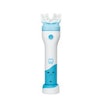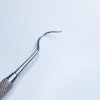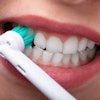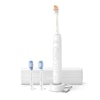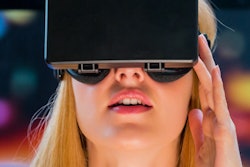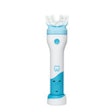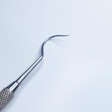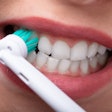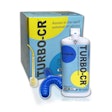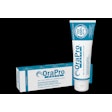
Looking for a better way to keep patients comfortable during difficult procedures? A new study in JADA found that patients undergoing scaling and root planing preferred using virtual reality as a distraction method to control their pain.
As if maintaining a healthy mouth or restoring a diseased one isn't hard enough, dentists face yet another daily challenge: to minimize pain while they do it.
Now, a new study in the Journal of the American Dental Association (JADA) suggests that immersive virtual reality (VR) distraction may be an effective method of pain control during periodontal scaling and root planing (SRP) procedures (JADA, Dec. 2009, Vol. 140, pp. 1508-1516).
Since SRP can be quite painful, patients undergoing it may need local anesthesia or other methods of pain control such as cognitive behavioral treatment, administration of nitrous oxide or intravenous administration of sedatives, noted the study authors. Clinicians have also used distraction techniques, such as watching movies, listening to music, and playing video games to reduce pain.
“As shown in this new study, VR is unusually effective at reducing pain during dental procedures.”
— Hunter Hoffman, Ph.D., director, Virtual Reality Research Center, University of Washington
Immersive virtual reality
Immersive VR gives patients the illusion of going inside a computer-generated world, as if it is a place they are visiting. VR technology allows users to interact with a simulated environment. Most VR environments provide the user with both visual and auditory experiences; some even include an avatar (graphical representation of the user) to provide an additional sense of presence within the VR environment.
Immersive VR has been shown to distract patients effectively during gastric laboratory procedures, as well as patients with burns from pain and anxiety during wound care and physical therapy, according to T. Roma Jasinevicius, D.D.S., lead author on the JADA study, and colleagues at Case Western Reserve University School of Medicine. Their study was conducted to evaluate the analgesic effect of immersive VR for dental patients.
"For dental patients in pain, and especially patients who become anxious during dental procedures, virtual reality is an unusually attention-grabbing technique, which helps take the patients' mind off of their pain and fear during the procedure," said Hunter Hoffman, Ph.D., senior research scientist and director of the Virtual Reality Research Center at the University of Washington, who has done extensive research on use of VR for distracting patients from pain.
Distraction has long been used to help reduce discomfort and pain during medical procedures, but as shown in this new study, VR is unusually effective at reducing pain during dental procedures, he added.
Positive VR experience
Dr. Jasinevicius and her team treated 38 patients with mild moderate or severe periodontitis who needed SRP. Patients received SRP under three conditions: control (no distraction), while watching a movie, or while involved in immersive VR.
For the movie the authors chose the animated feature "Cars" because it is nonviolent and inoffensive, they said.
For immersive VR, they chose a Silicon Graphics Octane/MXE workstation with Octane Channel Option coupled with a V8 headmount display to create a 3D, interactive, computer-simulated environment (a botanical garden). Patients used a handheld mouse to explore the VR world and chose their own pathways by controlling the direction and gaze of the avatar.
After each SRP procedure, patients responded to questions about their discomfort and/or pain by using a visual analog scale (range, 0 to 10 in which lower numbers indicate less pain or discomfort). The authors also recorded patients' blood pressure (BP) and pulse rate (PR).
Among the study's findings:
- Visual analog scale scores were significantly lower during VR compared with the movie and control condition. The control condition received the highest VAS (visual analog scale) score.
- Approximately two-thirds of the patients reported that they preferred the VR distraction method during SRP procedures.
- One-third preferred to watch the movie.
- Only one patient preferred no distraction at all.
- Patients also had significantly lower PR and BP measurements during the VR experience.
The results of the study show that use of VR was an effective pain management technique for patients undergoing SRP procedures, the authors concluded.
"Although my colleagues and I conducted and published an encouraging early case study on this topic several years ago (CyberPsychology & Behavior, Aug. 2001, Vol. 4:4, pp.527-35), case studies are scientifically inconclusive by nature and need to be replicated with controlled studies," said Dr. Hoffman.
The JADA study is a substantial step forward, he added.
"This is the first controlled study in the scientific literature to study whether immersive virtual reality can reduce pain during dental procedures, the first to show that most patients prefer VR distraction over watching a popular movie, and is also the first to show that VR reduces patients’ blood pressure during the dental procedure," he said.
Investing in virtual reality
So is it worth having your dental practice invest in immersive VR?
Patients are less likely to skip their schedule appointments and are more likely to return if they found the experience fun, said Dr. Hoffman. In addition, a patient who is tense during a dental procedure can make the hygienist or doctor anxious, tiring them out and leading to turnover. A patient who is having fun and is relaxed is much easier and fun to work on, he noted.
And the costs do not have to be prohibitive. Although the JADA study authors used a computer that costs tens of thousands of dollars, according to Dr. Hoffman, a brand new VR computer can be purchased for approximately $1,400-$2,200 and still be effective in a dental office.
Low-tech virtual reality can be run on a video gamers PC computer that costs under $1,000 for the computer and another $1,000 for some goggles, said Dr. Hoffman, although he recommends only medium- and high-tech VR for analgesia. High-tech virtual reality helmets are considerably more effective at reducing pain than low-tech helmets, but the high-tech helmets are also more expensive, he noted.
"The price of a VR computer has shown a huge drop, thanks to the video game industry and associated competition to sell fast PC computers," he said. "Over the next few years, we are hoping to see large drops in the cost of VR goggles, as new display technologies emerge to compete with the expensive LCD type high-tech VR goggles currently on the market."
A medium-tech VR system that is approximately as effective at reducing pain as a moderate dose of hydromorphone would be a great match for dental procedures such as periodontal scaling/planing, said Dr. Hoffman.
"Based on the results of Furman et al., the next step is to take high-tech VR analgesia to the next level … to see if [it] can be effective during dental surgery involving analgesia (used in addition to pain medications as usual)," he concluded.
The study authors also concluded that more studies are warranted and should include larger patient populations, more practitioners using different types of immersive reality environments and a variety of movie genres.
Copyright © 2009 DrBicuspid.com
